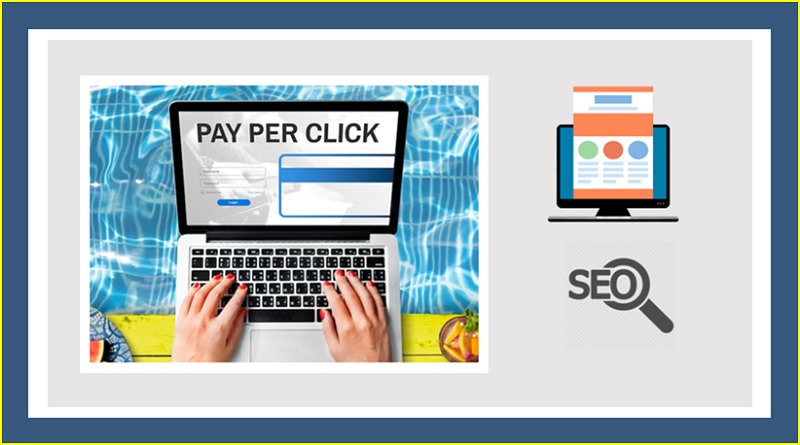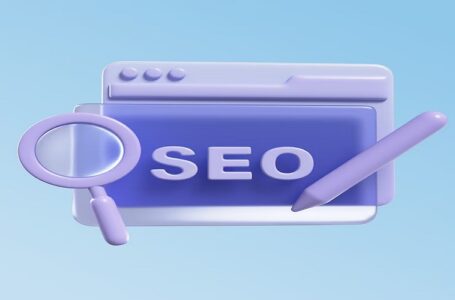The AI and automation strategies of Cobalt Keys LLC revolutionize digital marketing
How to handle PPC landing pages for SEO

SEO is not an island, as any knowledgeable SEO is aware of. To coordinate our marketing activities, we must collaborate with various stakeholders. However, the partnership between SEO and PPC experts in marketing teams is one of the most underutilised. According to my experience working with agencies and internally, cooperating with PPC experts can greatly enhance an SEO approach. After all, using PPC and SEO tactics to expand an online business is not unusual. Any internet marketing plan must include both channels. While SEO and PPC strategies differ in their methodologies, there are a few situations where both should work together to boost overall business success.
A look at PPC landing pages
Landing pages designed expressly for PPC campaigns are one of the interfaces between PPC and SEO. Alternate PPC landing pages can be created as a wonderful approach to optimise pages for conversions rather than just search. Look at this illustration of a landing page for PPC advertisements. PPC pages provide a PPC manager with a workaround as SEOs might be picky about their titles, keywords, content length, and other factors.
Can PPC pages interfere with SEO efforts?
The short answer is yes. Any page that is indexed in search needs to be optimized for search.
Creating PPC pages without taking into consideration the impact they can have on SEO can interfere with organic performance in two ways:
- Cannibalization. When there’s a PPC page version of an existing SEO page, the PPC landing page can potentially jeopardize the performance of its counterpart SEO page.
- Creating PPC landing pages means having pages on your website with low word count and minimal content, which in the time of Google’s helpful content update, can impact the overall performance of the website, including pages that are well optimized and provide value to the users.
Why have PPC landing pages?
A landing page can be used for both SEO and PPC purposes, so why would we need to create a PPC landing page?
From a marketing standpoint, PPC pages attract customers from ads. Thus, the content on the page should align with the ads’ messaging. This means that the most prominent text on the page can be the same as the messaging used in the PPC ad.
So, for example, if your PPC ad says something like, “We’re the best in the Canadian market,” your H1 can be the same text. Some PPC managers even use the ad title as the H1 and the ad description as the H2 to improve the CRO of their ads.
Another issue with PPC landing pages is that they are built to eliminate distractions. They are focused on getting the user that clicked on the ad to convert. In SEO, the content serves both the users and a search algorithm that decides whether this page brings the best value to the user.
How to handle PPC pages from an SEO standpoint
You can do any of the following tactics to deal with PPC landing pages on your website before they are created.
- Mark your PPC landing pages as noindex
This is the simplest solution and the index tag will not impact the PPC campaign performance.
- Create your PPC landing pages on a subdomain
Creating PPC landing pages on a subdomain:
- Does not require cross-domain tracking.
- Keeps your website organized.
- Will not impact the organic performance of your main domain as Google treats subdomains as a separate domains.
- Do both
Given all of this information, you may want to do both if you are handling PPC pages before they are created. In short, create the PPC pages on a subdomain and mark them as an index.
What if PPC landing pages already exist?
The solution can be a bit more complicated if you just started working on a website and found that PPC landing pages already exist. First, you’ll need to look into the performance data of those pages in Google Search Console and evaluate the impressions and clicks those pages are getting from the search.
If the PPC landing page is not performing well
You can simply label the page as noindex and move it to a subdomain if it isn’t performing well in search and there is an alternative SEO page for it. Instead of utilising the noindex tag on the PPC page’s alternative SEO page, you might try canonicalizing it. However, since Google has the option to ignore the canonical tag and decide to index both pages, this might not help fix issues with duplication or cannibalization. Nevertheless, as this method involves the least amount of work, you might want to test it first by putting correct canonicals in place on a few PPC landing pages to check if Google honours them.
If the PPC landing page is performing well and there’s no alternative SEO page
If the PPC page is performing well in search or has the potential of performing well in search if optimized (something that can be indicated by seeing that the page is getting plenty of impressions in GSC) and there’s no corresponding SEO page, you can copy the content of the PPC page to a new SEO page with an optimized URL path. Then you can redirect the existing PPC page to that newly created SEO page. Finally, you can re-create the PPC page on another URL and mark it as noindex, so the PPC campaign doesn’t get interrupted. Use this approach if you want to have two separate pages for PPC and SEO and want the URL to be optimized, and the PPC page will have fewer content optimizations. Note: If the PPC page URL is good, and you are allowed to optimize the PPC page for SEO, then definitely go with this much simpler approach.
If the PPC landing page is performing well and there is an alternative SEO page
If the PPC page is performing well and attracting some clicks from search and there’s an SEO alternative for it, you can simply redirect the PPC page to the SEO page, create a new PPC page on a different URL and mark it as noindex.
What to consider before making changes
There’s a line between ideal SEO recommendations and what you can execute in real life.
It won’t always be feasible to noindex every PPC page and move it to a subdomain. We need to consider the following:
- The number of pages: Does the issue occur on 2-3 pages or hundreds of pages? If you’re only dealing with a few pages, you should be easily able to implement the “noindex then move to subdomain” approach.
- The backend: Does the client have the resources to create and move pages to a subdomain? If that’s not the case, you can skip this part and stick to the noindex.
- Impact/effort: It takes resources to create new pages and redirect existing PPC pages. Is it worth the effort? Does the impact of handling the existence of PPC pages vs. just doing minimal SEO tweaks for the PPC page justify the expected outcome?
The approach in practice
For one client, a small ecommerce business, I decided to do minimal SEO tweaks to their existing PPC pages and let them be. I optimized the title tag, didn’t change the H1, changed H2s where applicable, and added keywords when needed.
I decided to use this approach because:
- The client’s website was small. The effort will not justify the impact with only a few PPC pages.
- The existing PPC pages were not jeopardizing or cannibalizing any important pages on the website.
Before rushing to execute SEO recommendations for handling PPC pages, evaluate the situation first. Look at the data and the expected outcome/impact before deciding.




